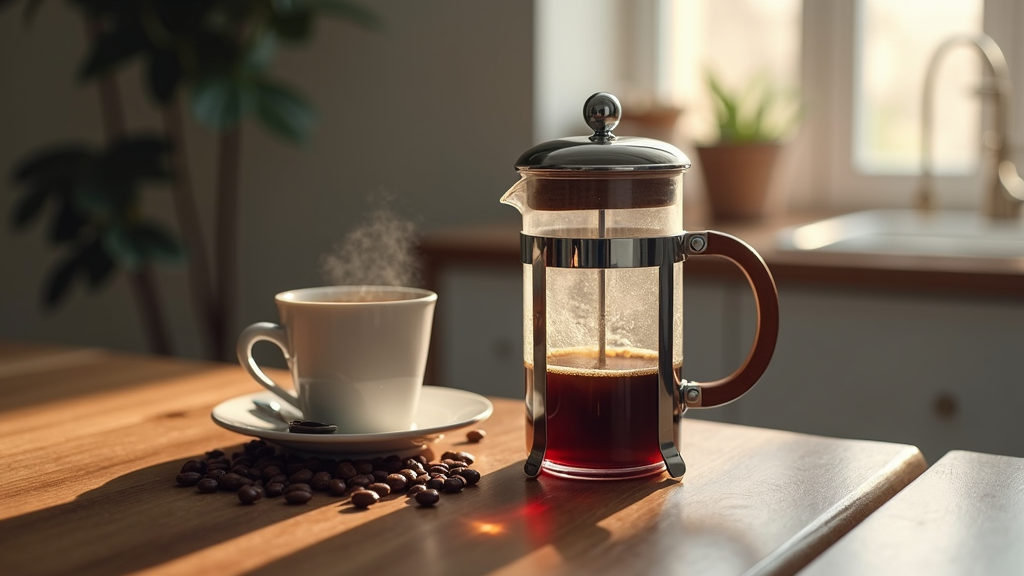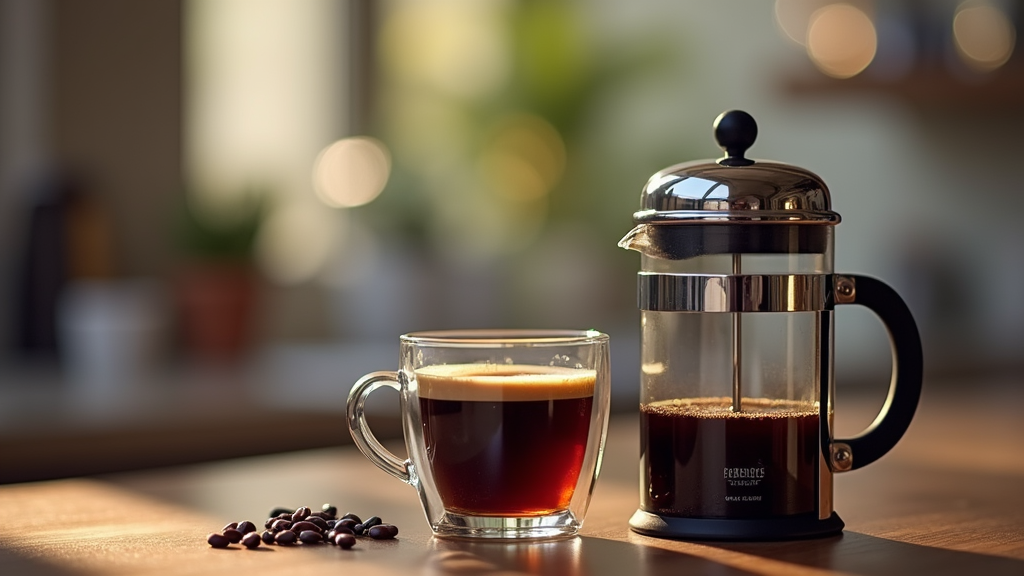Table of Contents
- Understanding What Coffee to Use for French Press
- Understanding What Coffee to Use for French Press
- Detailed Guide: Mastering French Press Coffee Selection
Understanding What Coffee to Use for French Press

Why Choosing the Right Coffee Matters for French Press
French press coffee is celebrated for its rich, full-bodied flavor, a result of the immersion brewing method. Unlike drip coffee, the French press allows coffee grounds to steep directly in hot water, extracting more oils and flavors. However, achieving that perfect cup hinges on selecting the right coffee and grind. A well-made French press coffee can have up to 20% more oils than drip coffee, contributing to its distinctive taste. Conversely, improper grind size accounts for over 60% of common French press brewing issues, leading to muddy or bitter results. The correct coffee and grind significantly impact the taste, sediment level, and overall brewing experience, making these choices paramount for any French press enthusiast.
French Press Coffee: A Brief Historical Background
The French press, a simple yet elegant brewing device, has a rich history dating back to the mid-19th century. Ironically, despite its name, the initial design emerged from Italy before gaining widespread popularity in France. Over the years, the French press has evolved, keeping pace with advancements in coffee culture. Recent developments include the increased availability of specialty coffee beans, fueling a desire for more nuanced and flavorful brews. The growing popularity of home brewing has also contributed to the French press’s resurgence, alongside advancements in grinder technology that allow for more precise and consistent coarse grinds.
What You’ll Learn About French Press Coffee Selection
This guide will equip you with the knowledge to master the art of French press coffee. We will explore core concepts such as the impact of coffee roast, grind size, and freshness on the final brew. You’ll learn how to select the best coffee beans to match your personal taste preferences, ensuring a satisfying and flavorful cup every time. Furthermore, we’ll delve into the practical aspects of achieving the ideal coarse grind, a crucial factor for optimal extraction and minimal sediment. Finally, we’ll address common French press issues and provide troubleshooting tips to help you perfect your brewing technique.
Understanding What Coffee to Use for French Press
Fundamental Concepts for French Press Coffee
To master French press coffee, understanding a few key definitions and principles is crucial. A coarse grind refers to coffee grounds with a texture similar to sea salt or rough sand, typically around 0.75-1 mm. Extraction is the process of dissolving soluble compounds from the coffee grounds into the water. Finally, sediment consists of the fine coffee particles that inevitably pass through the French press filter.
The core principles revolve around how grind size affects the extraction rate and the amount of sediment in your cup. Freshly roasted coffee beans will always deliver a more vibrant and flavorful brew. Water temperature and brewing time also significantly influence the final taste profile.
Essential Components for Optimal French Press Brewing
Brewing excellent French press coffee requires a few key elements. You’ll need whole bean coffee, preferably roasted within the last month, and a burr grinder to achieve a consistent grind size. Of course, a French press itself is essential.
Several features contribute to the quality of your brew. Medium to dark roasts are generally preferred for their robust flavor and reduced bitterness. A coarse grind is absolutely essential to prevent over-extraction and excessive sediment in your cup. Using freshly roasted beans, ideally between 3 and 10 days old, will make a noticeable difference.
Secondary aspects include water quality, where filtered water is highly recommended for optimal flavor. The ideal water temperature is around 200°F (93°C) for the best extraction. A typical brewing time is approximately 4 minutes.
Finally, consider the variations in coffee beans. Single-origin beans offer unique and distinct flavor profiles, while blends are formulated to provide a more balanced and consistent taste. Organic coffee is often preferred for its purity and environmental benefits. Some advanced options, like dual-filter French presses such as the Espro Press P5, are designed to further reduce sediment, even when using pre-ground coffee.
Detailed Guide: Mastering French Press Coffee Selection

Mastering French Press coffee hinges on precision: use freshly ground beans, control water temperature (200°F or 93°C), and time your brew carefully to avoid over-extraction. Experiment with grind size and coffee-to-water ratios to fine-tune the flavor profile to your preference, addressing bitterness or weakness in the brew.
Gathering Materials: What You Need For French Press
To brew exceptional French press coffee, you’ll need a few key items:
- Whole bean coffee (2 tablespoons per 6 oz of water)
- Burr grinder
- French press (typically 8-cup or 34 oz capacity)
- Kettle
- Kitchen scale (optional, for precise measurements)
- Timer
Before you start, heat your water to 200°F (93°C) and weigh out your coffee beans – approximately 30g for a standard 8-cup French press. Pre-heating the French press with hot water will help maintain temperature during brewing. Also, ensure your grinder is clean to avoid any unwanted flavors, and use filtered water for the best possible taste.
French Press Brewing: A Step-by-Step Coffee Guide
Follow these clear steps for the perfect French press brew:
For best results, use a kitchen scale for accurate coffee-to-water ratios. Avoid pressing the plunger down too quickly to prevent sediment from escaping. Pour the coffee into a pre-heated serving vessel to maintain temperature. Don’t use pre-ground coffee, as it’s often too fine. Avoid over-extracting by brewing for too long, and ensure your water temperature is correct – not too hot or too cold.
Advanced Techniques: Optimizing Your French Press Coffee
Elevate your French press game with these expert tips:
- Experiment with different coffee-to-water ratios to find your preferred strength.
- Try different roast levels to discover your favorite flavor profile (nutty, chocolate, or floral).
- Degas the coffee beans for 30-60 seconds after grinding to improve flavor clarity.
Adjust your grind size based on taste: If the coffee is bitter, use a coarser grind; if it’s weak, use a finer grind. Control water temperature with a variable-temperature kettle. Fine-tune brewing time to achieve the perfect extraction. If your coffee is bitter, it’s likely due to over-extraction or too fine a grind. Adjust grind size and reduce brewing time. If it’s weak, it’s likely due to under-extraction or too coarse a grind. Adjust grind size and increase brewing time. For excessive sediment, ensure the grind is coarse enough and avoid pressing the plunger down too quickly. Consider a dual-filter French press.

